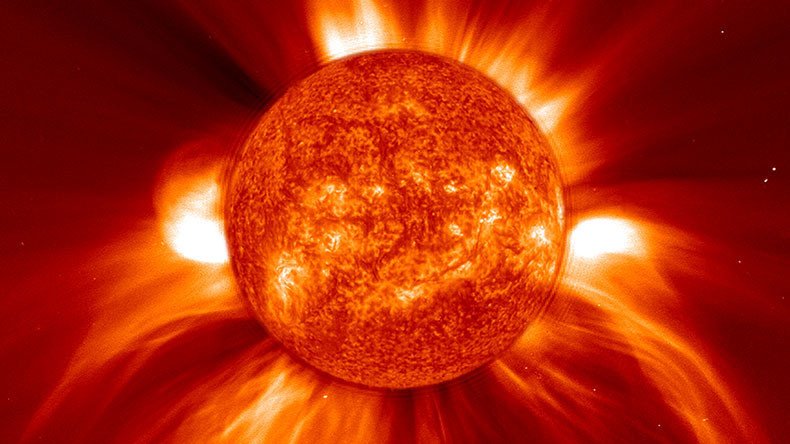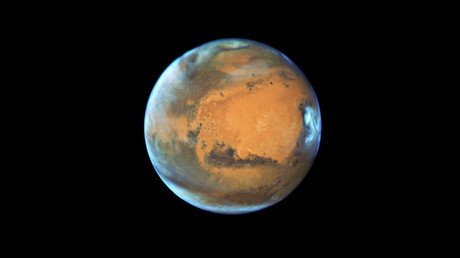Electrically-charged Mars moon could jeopardize future exploration – NASA (VIDEO)

Powerful solar eruptions could electrically charge Martian moons to hundreds of volts – a phenomenon that may impact future human and robotic explorers, according to a new NASA study.
The study, published in the scientific journal, Advances in Space Research, found that astronauts or rovers could accumulate “significant electric charges” when traversing the night side of Mars’ moon, Phobos.
The charges are caused by solar wind – a stream of electricity-conducting gas, called plasma, that’s constantly blowing off the surface of the sun and into space at a pace of around a 1mn mph.
READ MORE: Impending doom? ‘Eerie’ red sun linked to #StormOphelia freaks out Twitter
When the solar wind hits the ‘day’ side of Phobos, the plasma is absorbed by the moon’s surface, however this creates a void on the ‘night’ side, where the flow is obstructed.
The plasma void may be creating a situation where the friction from astronauts or rovers moving across the night-side surface could create a transfer charge from the moon’s dust and rock to their space suits, the study found.
“This dust and rock is a very poor conductor of electricity, so the charge can’t flow back easily into the surface – and charge starts to build up on the spacesuits,” the researchers wrote.
According to the team’s calculations, this static charge can reach 10,000 volts in some materials, and if the astronaut was to touch a piece of equipment they could release the charge.
“We found that excess charge builds up in these regions during all solar wind conditions, but the charging effect was especially severe in the wake of solar eruptions like coronal mass ejections, which are dense, fast gusts of solar wind,” said William Farrell of NASA’s Goddard Space Flight Center.
Before this revelation, Phobos was considered as a promising base for the human exploration of Mars, as its weak gravity makes it easier to land spacecraft, astronauts and supplies.
“While we don’t expect these charges to be large enough to injure an astronaut, they are potentially large enough to affect sensitive equipment, so we would need to design spacesuits and equipment that minimizes any charging hazard,” said Farrell.
NASA had planned for astronauts to control robots on Mars from Phobos, cutting out the considerable time-delay if the task had been carried out from Earth.
While the study primarily focused on Phobos, another Martian moon, Deimos, also has no atmosphere and is directly exposed to solar wind, leading scientists to assume it has similar electrical conditions to Phobos.













